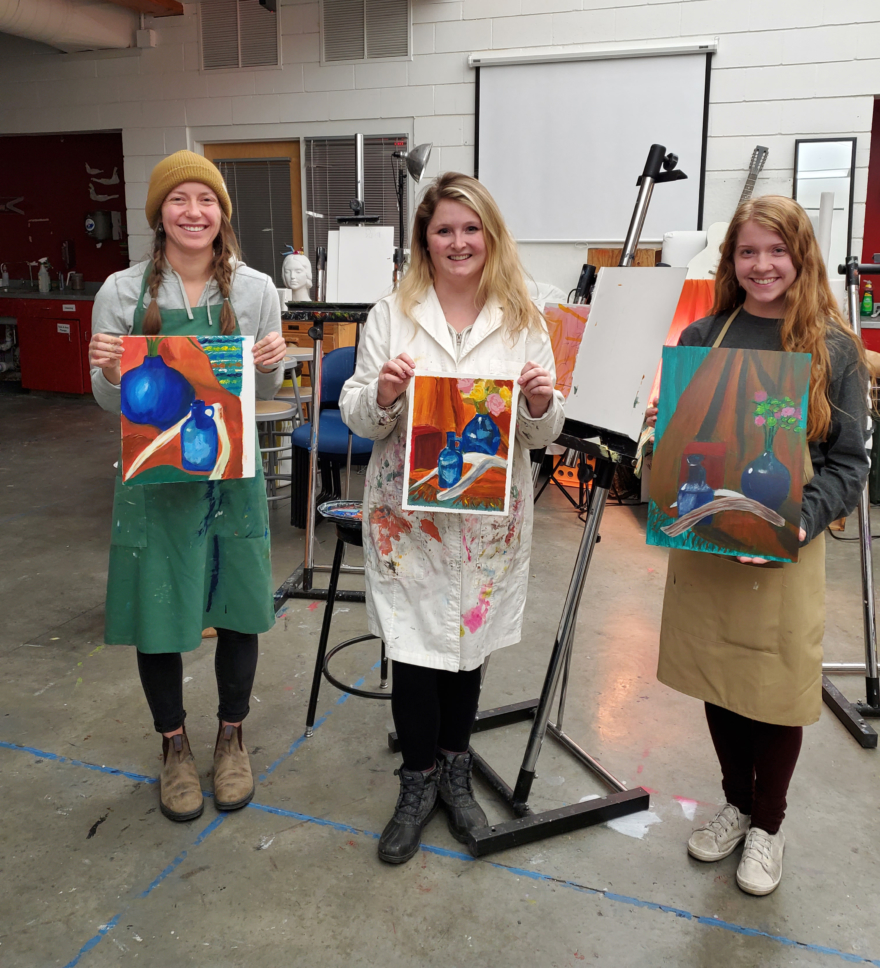
By: Emma Keinath-Lopez
Art Association of Jackson Hole board chair Scotty Craighead is more than an influential figure at the Association. He is also an avid artist who, like many here in Jackson, is captivated by the raw beauty of this wild place. Through mixed media, he captures images of this place in a way that cannot be experienced with the naked eye. Craighead finds this landscape inspirational, and has been exploring this place since he was a child.
Craighead grew up right outside of Jackson in Kelly, Wyoming. His parents enrolled him in the after school art program at the Art Association of Jackson Hole when he was in first grade. He reflects fondly on his time spent in the studios. Most memorable was his class with Art Association Executive Director Bronwyn Minton, where he engaged in glass blowing to make pendants and marbles. In high school, he took an art class with Ben Roth who taught welding and industrial art. Fascinated by the way things are created, he became interested in art as a way to create and capture beauty. There is value in something existing just for the sake of beauty. Craighead explains how creating beauty allows for “appreciation of the world around us and ensures we do not take it for granted.”
Craighead sure did appreciate the world as a youngster. With a wonderful view of the Tetons right outside his front door, he was inspired to go on numerous outdoor adventures. For some, adventure on its own is not enough to explore this place. Craighead saw art as a unique way of interacting with this place. He went on to study printmaking and photography in college. When Craighead came home after graduating, he wanted to find new ways to see, so he eventually found his passion for seeing the world through the eye of a camera.
Photography by Scotty Craighead – Photograph of exhibit captured by Tristan Greszko
Craighead’s journey into macro ice photography seems like a natural step for him in the progression of his journey in the arts. His particular fascination examining the unique structure of ice crystals seems similar to learning how metal or glass molds together to create their own unique shapes and forms. With photography, Craighead is motivated to step out into the natural world and interact with it in an intentional way. He stops, crouches down in the snow, and goes hunting for the most beautiful and fascinating crystals that require close examination with the help of his camera.
Photograph captured by Tristan Greszko
Once he has the photographs, Craighead either allows them to stand alone in stark singularity, or finds a way to manipulate their appearance to create something entirely different, but still very much an ode to the natural world’s beauty. When he first began to create collages, he would use a spray-on adhesive which he describes as a messy fail. Now, he uses a clear acrylic to adhere the photographs together. He recalls walking down by the Snake River when he first started examining snow up close, and eventually pulling out his camera and realizing he struck gold, or really cool ice in his case. Craighead was excited by his discovery of hidden beauty, and wanted to share what he found with others. In 2014 he presented “#IceChronicles” at Pearl St. Bagels, a Jackson classic spot. This was just the beginning of sharing his work. Craighead went on to present in various exhibitions in Jackson, Denver, and Portland. However, the magic of the Tetons and a special community of people drew him back to Jackson, the place he calls home.
In 2018, Craighead decided to join the board of directors at the Art Association of Jackson Hole, becoming its chair in 2021. Craighead said that he wanted to give back to the organization that provided so much inspiration to him in his childhood and into his adult life. As a supporter and creator of art, he believes that “art is vital in any culture and community” that the Art Association “creates exposure to others that might not be otherwise exposed.” When it comes to art’s role in society, he agrees that it acts as a healing force for many. Beyond what art does for one on a personal level, Craighead is a proponent of utilizing art to bring awareness to the beauty of the natural world. This attention to natural beauty not only engages the viewer but also inspires people to want to protect what they see. In such a time when the topic of climate and environmentalism is incredibly heated, Craighead reflects, “maybe we need art more than ever right now.”
Photograph captured by Tristan Greszko
Craighead’s work in macro ice photography pulls the viewer into a perspective that highlights the small wonders of nature. By pausing to appreciate these mini phenomena, hopefully viewers will become inspired to dive deeper into the world themselves, and dare to create beauty from beauty itself. Craighead came full circle back to the Art Association of Jackson Hole where he started and continues to further his passion for creating art and encouraging others to explore different mediums and unlock their own creative potential. Finding inspiration from nature is a beautiful thing. Acting on inspiration and turning it into beautiful, impactful art is the next step. Find an outlet for your inspiration by journeying into our studios to discover your medium, or to explore the blurred boundaries of creation and the power of free expression!
Photography by Scotty Craighead
Art Association of Jackson Hole board member Agnes Bourne was three years old when she designed her very first home. I haven’t seen this design, but through Bourne’s vivid descriptions, it easily became my favorite of her work. Complete with an entry room, hallway, community room, and a bedroom, all the essentials were there. There was no need for a bathroom, and the only light came from a single lightbulb hanging from the ceiling. Lastly, this home did not stretch much wider than six square feet. What kind of person lives in a house such as this? No person at all, rather a four legged friend named Casco. The doghouse had a sloped roof that would hinge to open and close, allowing easy access to vacuum the wall to wall carpeting. Casco was not allowed inside the house, so Bourne wanted her dog to have a cozy place to live. This thoughtfulness, consideration of all others, and attention to detail, is what Bourne brings to all of her artistic pursuits.
From the beginning of my conversation with Agnes Bourne, she emphasized that she wanted to serve as a voice of encouragement and that her story wasn’t what was important. I discovered quite quickly that the most fascinating and helpful information came from the stories of her past, the revelations of her present, and the mindset of her future.
Agnes Bourne is a designer located in Jackson, WY, who has been working on her craft for over 60 years – the same length of time that the Art Association of Jackson Hole has been offering art education. Bourne’s impact in the design world is concentrated in Jackson, San Francisco, and New York. The breadth of her skills spans wide, as she has done work in historical restoration, set design, product design, residential and commercial interiors, and designing her own line of furniture called the “Agnes Bourne Collection.” She is a nationally recognized lecturer and design juror, published in multiple books, founder of the architecture and design department at SFMOMA, and awarded multiple medals of distinction from a variety of organizations, including the Smithsonian Institution. Bourne’s resume is impressive, and I thought that I would be quite nervous sitting in front of her. On the contrary, I felt at great ease, like I had been chatting with a friend. Her resounding vision for her art shines true in everything that she touches, and that vision is based on a sound morality that leaves one feeling hopeful and inspired.
“Design is a means to maintaining an inspired community and creating a sustainable quality of life. Art is expression. Teamwork is the strategy,” Bourne says.
This idea of a sustainable quality of life has a duality to understanding. Bourne wishes to make the designed space comfortable and livable. When Bourne was eight years old, she designed a chicken coop to house a dozen hens on her property. She recognized that they had a need just like any human to be comfortable, especially when they were gifting her with fresh eggs for breakfast. She asked herself, “How do we feed these chickens, keep them safe, and keep their house clean?”
She set to work designing a roost, egg laying station, scratching area, fruit crates for resting, a straw bed, and metal that extended underground for protection from digging animals. By focusing on safety, comfort, and cleanliness, she was able to give these hens a better life.
Another way to understand sustainability is through the environment. As humans, we create a lot of textile, plastic, and additional wastes. When focused on “fast fashion,” the design industry can be quite harmful to the environment. Bourne is a lover of the natural world who follows through on being sustainable in her design practices. “Living green” is a concept she weaves into much of her work. She uses materials that are able to be recycled, and sources wood from forests managed sustainably. In one of her designs, she transported back in time to 1955 and got her hands on some reclaimed materials from automobiles from that era. She lights up as she talks about the magic of bringing back the energy from that time period through her designs.
Bourne’s process for designing client’s spaces is incredibly unique and empathetic. Empathy is not the first word I would use when thinking about designing a living space, but I learned that it is vital to the process, and serves as a powerful example of how to work with others even outside of the creative process.
Not one chair color is chosen before the “Building Better” interview is had. This is an interview that Bourne gives to every member of the household. During this process, she gets a feel for the personal identity of each member and what their needs are. I find it unique and powerful that not just the “head of the household” gets a say. “All voices need to be heard, all stakeholders, every family member needs the opportunity to be heard,” Bourne says. If dogs could talk, I highly suspect that she would interview them as well. Each family member writes down their answers, then reads the answers out loud together as a group. This process is incredibly important because it determines whether “they are leading a life that is someone else’s and not theirs,” Bourne reveals. She urges clients to “get in touch with where you are at now and if you want to bring where you came from to the present day.” In this process, verbalizing and sharing what is on one’s mind not only enlightens others to where you are at, but also acts as a moment of reflection for the individual as well.
Bourne’s act of reflection during the design process is where her minor in Psychology shines through. She recognizes the power of identity and the importance of coming together to share. She believes that art is divided into two parts. One is what we show to ourselves, and the other is what we show to the world. By presenting to the world we are also able to see what we are revealing about ourselves. From there, we see if we are being honest with ourselves about who we are.
Art can be quite vulnerable. When it comes to sharing creations, it can be a scary endeavor. However, Bourne emphasizes that art must be shared if you want to see change in the world. She explains how it is an opportunity for the artist and the viewer to grow and have revelations. She quotes her grandfather, “You can’t say you’re something if you don’t have a paper on the wall verifying it.” I at first was taken aback by this statement. Isn’t there value in an individual creating art for their own understanding, growth, and enjoyment? Bourne says yes, of course. Both private and public art have their important place. However, she also claims that if you want to step out and be a leader and have a voice in the public sphere, one must contribute to the field by sharing their work with others. Bourne compares an artist not sharing their work to a chef not cooking for other people. As I considered this, I thought about how if Agnes Bourne had not shared her designs and been so active in the field, I would not be sitting with her today and gaining such insight into not only the world of art, but life.
When Bourne was younger she worked in a department store for $1 an hour in the design department. A woman came into the store, and after talking with Bourne, she asked her to design her house. Bourne did not have any professional design experience at that point, yet this person trusted something in her. Bourne says that she got this job because she “had knowledge and knew how to ask questions.” At such a young age she was aware of one of the most important aspects of communication that doesn’t involve speaking at all – listening. “Know how to listen. Listen to the client, self, and the world around you. Pay attention to what you’re doing,” says Bourne.
Bourne has been on her path of artistic design since she could remember. When asked if children are born with natural talents, she exclaims, “All children are born as discovery machines with the ability to go out there and figure out what they got.” Bourne is on the board of the Art Association of Jackson Hole because she truly believes in the importance of art education. Bourne fondly remembers when she brought her grandchildren into the Art Association’s studio for a ceramics class during the holiday season. She attests, “I highly recommend family events in the studios. Classes give us the opportunity to have group experiences with family and friends which is life-giving. It takes people places they can’t go by themselves.” This goes back to Bourne’s mission statement that involves the concepts of teamwork and community. These themes seem to be solidifying at this stage in her career.
One theme and inspiration remains steady, and that is nature. Bourne views the natural world as one large interconnected community. Biomimicry, (the design and production of materials, structures, and systems that are modeled on biological entities and processes,) is a concept that fascinates her. The intersectionality of everything in connection with the natural world is an idea that she continuously circles back to. Bourne’s environmentalism and love for all living things is apparent from the very beginning. She reflects back on her earliest designing days as a child, “It wasn’t about me. It was about how my idea could help. How could I make a better world for my chickens, or my dog.”
Bourne utilizes art to help all beings, as well as the environment. Whether it’s creating a space for a business person to be an efficient worker, or a structure to make a dog’s life a little better, she listens to the being and uses her creativity to make a positive change.
Bourne exclaims that she is coming to the “last quarter of her life,” and her priorities are exploration, adventure, and pondering the intersectionality of everything in the natural world, including humans. As I listen to this, I find it beautiful. When I think about young Agnes Bourne giving such care and consideration to her dog and chickens, I see a young girl who already feels connectedness and is expressing it through creation. Through the sharing of her creativity, she makes numerous lives better.
Today, Bourne is still designing, but has shifted her focus to pictures, poetry, and prose. Continually looking for the blurred lines between mediums, Bourne is excited about this new adventure. Her parents had always wanted her to join the family passion of publishing, but Bourne’s natural inclinations and identity moved her away from words and towards making sense of the world through colors, textures, and materials. Dyslexia was a barrier that dissuaded Bourne from publishing, but Bourne is now entering the world of publishing with great freedom, as she is finding the beauty of prose and poetry and the pairing with thought-provoking imagery. She has published two books, Moments and Potpourri. Each is a unique collection of words and imagery, meant to inspire any person at any moment. The imagery captures the magic in the seemingly mundane, inspiring people to pause and appreciate the small and large scale wonders around them. Bourne explains how these books were created from her design process that remains constant throughout all of her creative endeavors. “When you have an idea, bring it forward,” Bourne emphasizes. “If you just open up your eyes and open up your mind, everything you need is right there in front of you.” Bourne believes this with all her heart, and wants to instill this mindset in everyone. As we sit in the art studio, Bourne points out various details that delight her during our conversation, from the paint drippings dried on the trash can to the light casting onto the looming mountain out the window.
Expression through art is an incredible tool for navigating one’s life. Bourne reaffirmed the idea that art can heal on a personal and global scale. Creation gives us tools for life, not just in art. The Art Association of Jackson Hole creates a space for creativity to thrive, while also providing guidance and community that is beneficial during all stages of one’s life. It’s never the wrong time to start turning on your “discovery machine” and exploring the connection between all beings and the world around us.
Children’s brains are like sponges. Studies show that between the ages of 2-7, children’s brains absorb information quite rapidly. Throughout formal education, youth are bombarded with new ideas in all different subjects. This period of absorption is critical for development, but so is the act of releasing. It can be an incredibly cathartic and empowering experience for a child to create rather than being on the receiving end.
Many people are starting to realize the power that art education has on youth. In fact, 91 percent of Americans believe that the arts are vital to providing a well-rounded education. The Brookings Institution conducted a large-scale study of over 42 elementary and middle schools that examined the sustained reinvigoration of school-wide arts education. They found that “a substantial increase in arts educational experiences has remarkable impacts on students’ academic, social, and emotional outcomes. Students in the study receiving arts education experience “a 3.6 percentage point reduction in disciplinary infractions, an improvement of 13 percent of a standard deviation in standardized writing scores, and an increase of 8 percent of a standard deviation in their compassion for others.” When they restricted analysis to elementary schools, they found that “increases in arts learning positively and significantly affect students’ school engagement, college aspirations, and their inclinations to draw upon works of art as a means for empathizing with others” (Brookings). These findings support the message that art education is vital to a child’s well-being and development. The benefits of art can be seen in quite a number of different ways.
Builds skills both physically and academically
Creating art improves children’s fine motor skills and develops their creative problem-solving skills. Simple acts such as cutting paper, gluing, or finger painting helps children become independent thinkers and aids in developing coordination. Building these skills helps with academic achievement. In fact, a report from Americans for the Arts concluded that children who regularly engage in artistic activities are four times more likely to be recognized for academic achievement. Outside the world of academia, these skills are beneficial to children outside the classroom as well.
Creates a sense of self
Many children struggle with finding their own voice and identity, which is a natural process of growing up. When a student engages with the creation of art, they are responsible for the outcome, and the process it takes to get there. By being put in the driver’s seat of creation, they learn more about their likes, dislikes, style, and overall personal identity. It can be easier for youth to form their identity in a visual way rather than trying to make sense of the twirling turbid thoughts of adolescence. According to the International Child Art Foundation, “Research indicates that a child who is exposed to the arts acquires a special ability to think creatively, be original, discover, innovate, and create intellectual property—key attributes for individual success and social prosperity in the twenty-first century.”
Expression beyond words
Not everyone finds it easy to express themselves vocally or through writing, and that’s okay. Art is an outlet for expression, especially in children who oftentimes have to cope with uncontrollable situations and strong emotions that can be overwhelming. For little ones who don’t yet have the vocabulary to express themselves with words, art is their voice. Even older children who have the vocabulary oftentimes prefer to speak through art. Every human has a different way of sharing what they are feeling, and art can be an incredibly helpful medium for expression.
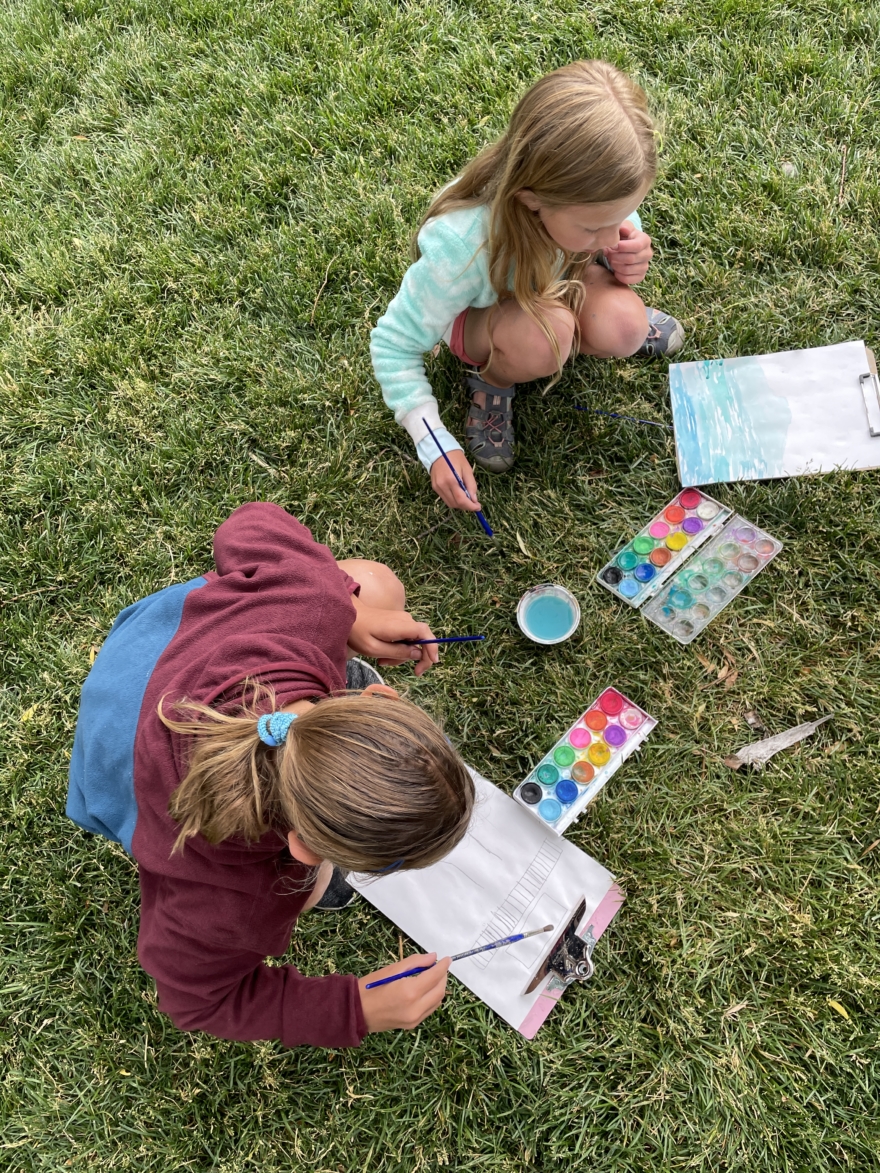
Many can think back to an art project they did when they were younger. My memory is of a scratchboard of a wolf. I remember each stroke of the tool used to detail the individual hairs on the creature. I went on to make scratchboards of many different animals, mostly ones that could be found out west in the wide array of public lands. Today, I find myself in Wyoming, still admiring the animals I used to create, but now seeing them in the flesh. As with many of the activities we engage with in youth, art can shape where we go, what we do, and how we interact with the world around us.
As one creates art, it simultaneously moves, shapes, builds, and transforms the self. What can a child take from engaging in art? The answer is different for every child, but most often centers around a greater understanding of the self, and the world around them.
Enrich your child’s development by not only making art accessible to them, but also putting them in environments that foster a growth and creativity mindset. This week Wednesday, February 8th, Youth Class Registration for the Spring 2023 begins. At this time, parents can register their children for after school classes and Spring break camps. Don’t wait too long, since classes fill up fast!
This year, 2023, is the 60th anniversary of the Art Association. Before diving into where we are today, the progression and growth of the Art Association is better shown through time travel.
Let’s go back in time when the town of Jackson looked very different than it does today. The “winters of elk and crackers,” late founding member of the Art Association Georgie Morgan recalls, was a time during the 1950s which was very difficult for local residents in Jackson. Many folks subsisted on elk and crackers as their main food supply, devoid of the luxuries of today’s streets lined with delicious restaurants and accessible grocery stores that seem to defy the surrounding mountains.
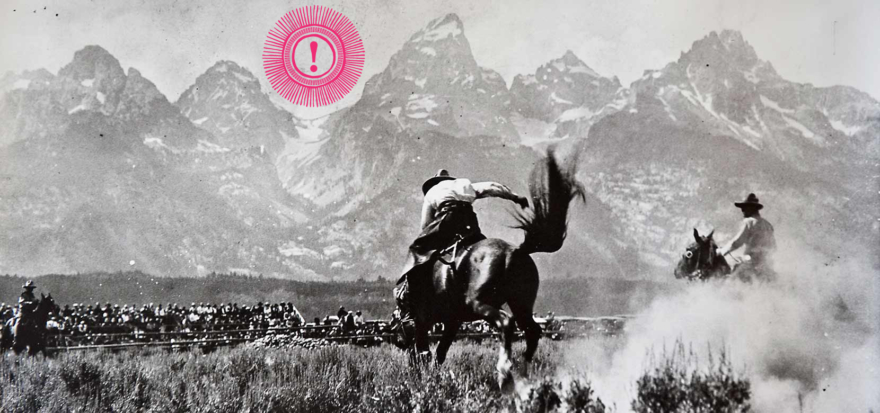
Winters were harsh, and folks didn’t have the same comforts that they do today to help them survive the season. Today, we create barriers from the elements with our thick down jackets and customizable microclimates in our houses. People have been braving this harsh place for thousands of years, starting with Indigenous Peoples, which we see evidence of over 10,000 years ago around the Tetons. The first non-native permanent residents in the valley didn’t show up until 1884. These homesteaders did their best to survive out here, but the harsh winters, short growing season, and violent weather patterns made for a challenging time. Settlers quickly realized that nurturing people’s fascination with the wild west was the best way to make money, through dude ranching and other tourism pursuits. The folks that did make cattle ranching work were few and far between, but the pride they felt in making it work is still felt to this day in many legacy ranches. Even with leaning into tourism, people still struggled to make it work here, especially during the harsh winters.
There was a culture that emerged in the snowy mountain town of Jackson, a culture that we still work to cultivate, nurture, and preserve to this day. This culture involved the creation of art. There are records of humans creating art since long before we started to preserve pieces in museums and records; specifically, the first recorded piece of visual art was from 45,500 years ago of hand painted pigs in ochre. However, something very unique happened in Jackson that goes beyond mere creation. In the early 1960s – people started to come together to create. This new culture fostered a community of art lovers that created, shared, and marketed their art to survive in this mountain town. The Art Association was founded during a time of low employment in Jackson, with the goal of helping people develop their craft and art skills to supplement summer’s wages, while also creating a vibrant arts community.
2023 marks the 60th anniversary of the Art Association, and also marks the 60th year that people have been coming together in Jackson to create. As the oldest visual art nonprofit in the valley, we are proud to have created the founding community dedicated to nurturing art, and still to this day supporting that same mission – encouraging a vital, creative community by providing everyone with exposure to, education in and enjoyment of a wide variety of art experiences.
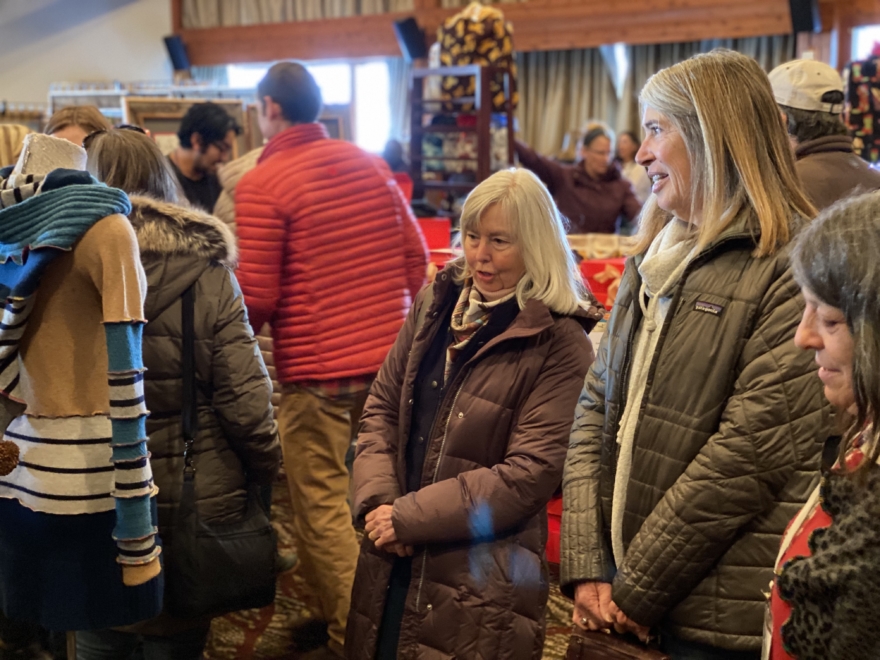
Just a few weeks ago in December we had our annual Holiday Bazaar, a tradition that was started in 1966 by the Art Association. In 1966, people gathered in front of St. John’s Episcopal Church to sell handmade knitted wool mittens, leather belts and bags, ceramic bowls – all of which you will still find at Holiday Bazaars today. Keeping warm and having a vessel to put your food in was still a priority then like it is now in the 21st century. Even in that time, people were creating and selling a variety of mediums of visual arts such as paintings and drawings. By selling their artistic wares and work, people found new ways to survive the harsh winters when naturally there was less income from tourism and agriculture pursuits. Today, artists still use art fairs to help them make a living so that they can continue to do what they love – create.
This can be a harsh, but also beautiful place. To many artists past and present, the importance of trying to capture the beauty of this breathtaking landscape and express one’s interactions with it through visual art is a vital part of surviving here, as much as food and shelter is. The Art Association recognizes this need, and works to create a place that nurtures these creators while also inspiring emerging artists of all ages and backgrounds. Here, the word “artist” isn’t reserved for any one kind of person, it can be anyone with the desire to create.
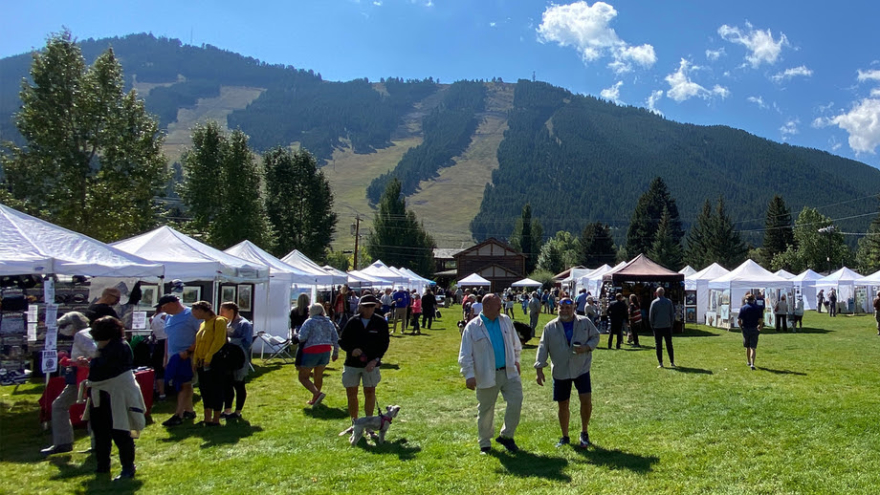
In 1985, the Art Association offered 25 classes, serving 260 students (111 adults and 149 youth). In 2022, the Art Association offered 300 classes, serving 2,290 students (586 adults and 1704 youth). The impact that the organization has on the community of Jackson has grown exponentially over the years, and will continue to grow in the coming years with your support. Our membership community supports us as we support them in their artistic pursuits. As the Art Association enters its 60th anniversary, we are continuing to support the legacy and honor the history of this vital Jackson community staple.
What will folks in 60 years say about how people live now? We hope that they recount how hard we work to foster a vibrant artistic community, how much we try to make the arts accessible to everyone, and last but not least, how much we love to create with others. Let’s make 2023 a year that history won’t forget because of our impact on the thriving arts community that we started during the winters of elk and crackers. We’ve grown so much since then, and we’re excited to grow more during our 60th anniversary and beyond.
